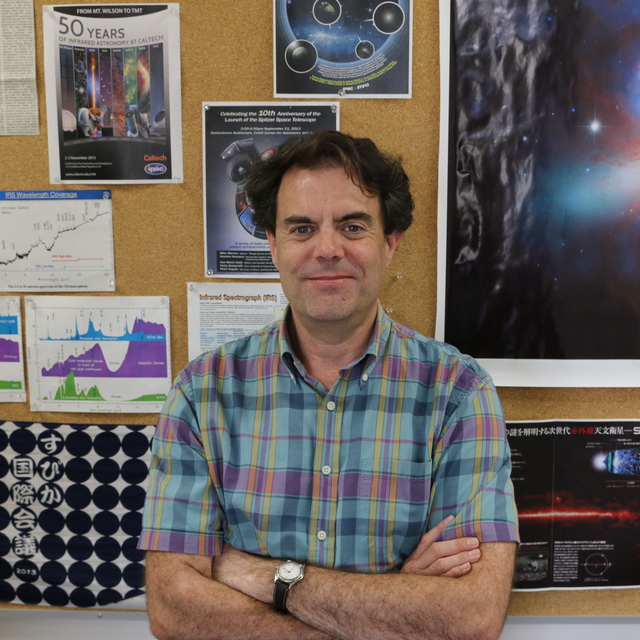
The Impact of an Active Galactic Nucleus on Polycyclic Aromatic Hydrocarbon Emission in Galaxies: The Case of Ring Galaxy NGC 4138
April 2024 • 2024ApJ...965...75D
Abstract • We present a focused study of radially resolved varying PAH emission in the low-luminosity active galactic nucleus (AGN)-host NGC 4138 using deep Spitzer/infrared spectrograph spectral maps. Using new model PAH spectra, we investigate whether these variations could be associated with changes to the PAH grain size distribution due to photodestruction by the AGN. Separately, we model the effects of the varying radiation field within NGC 4138, and we use this model to predict the corresponding changes in the PAH emission spectrum. We find that PAH band ratios are strongly variable with radius in this galaxy with short-to-long wavelength band ratios peaking in the starburst ring. The changing mix of starlight appears to have a considerable effect on the trends in these band ratios, and our radiation model predicts the shapes of these trends. However, the amplitude of observed variation is ∼2.5 × larger than predicted for some ratios. A cutoff of small grains in the PAH size distribution, as has been suggested for AGN, together with changes in PAH ionization fraction could explain the behavior of the shorter bands, but this model fails to reproduce longer band behaviors. Additionally, we find that short-to-long wavelength PAH band ratios increase slightly within ∼270 pc of the center, suggesting that the AGN may directly influence PAH emission there.
Links
- PREPRINT http://arxiv.org/abs/2402.08123
- NED https://ned.ipac.caltech.edu/uri/NED::InRefcode/2024ApJ...965...75D
- ELECTR https://doi.org/10.3847/1538-4357/ad2169
- SIMBAD https://simbad.u-strasbg.fr/simbad/sim-ref?querymethod=bib&simbo=on&submit=submit+bibcode&bibcode=2024ApJ...965...75D
- PDF https://iopscience.iop.org/article/10.3847/1538-4357/ad2169/pdf
- DATA https://doi.org/10.17909/T9H59D
- DATA https://irsa.ipac.caltech.edu/bibdata/2024/D/2024ApJ...965...75D.html



